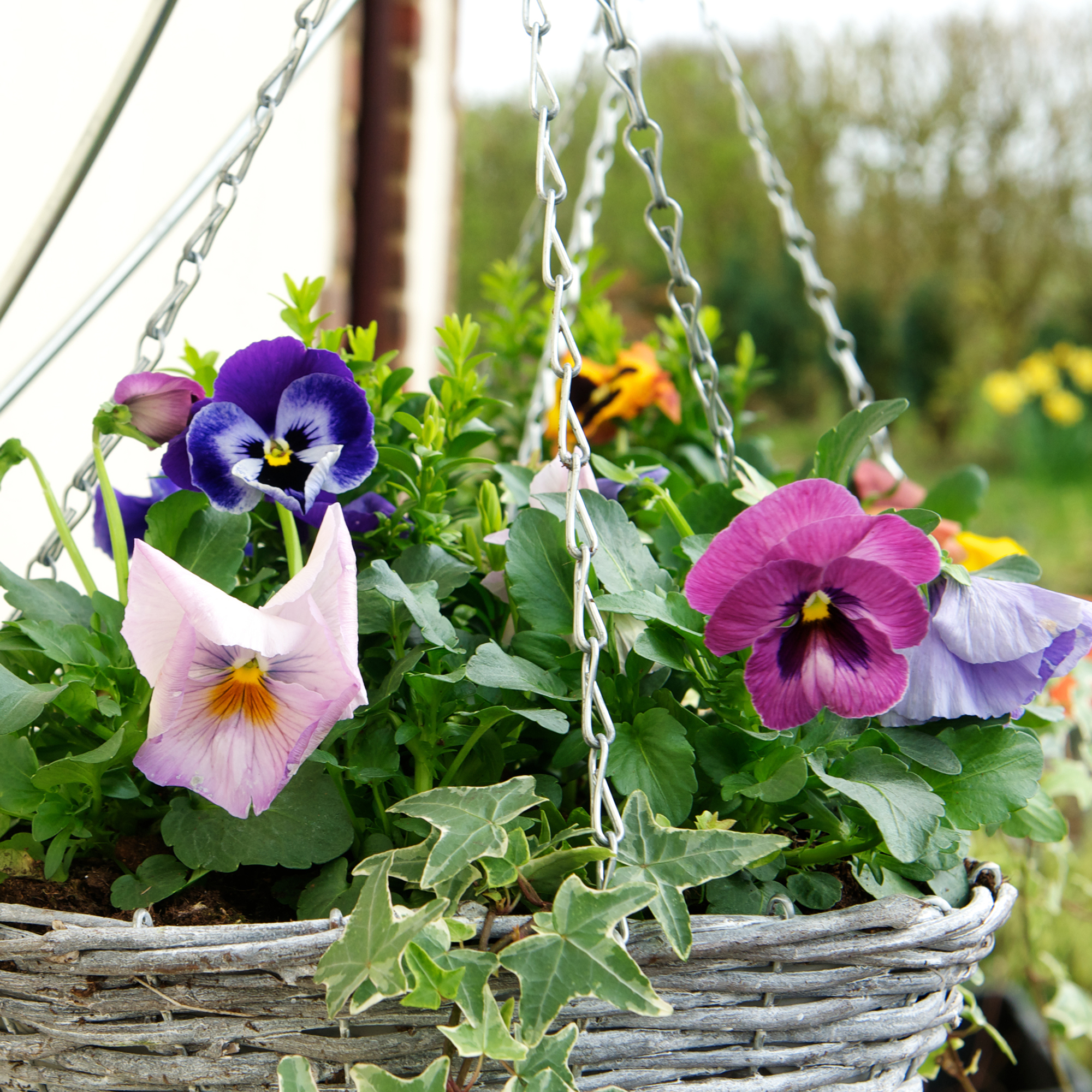
Many people assume that winter gardens are colourless and boring, but that doesn’t have to be the case. These flowers can add some all-important vibrancy to the colder months, but to get the most out of them, you need to know when to plant winter pansies.
Yes, these delicate little blooms might not look like they can take on the harsh UK winters, but winter pansies are some of the best winter flowers that bloom at Christmas and some of the best winter flowers for hanging baskets. They take the cold temperatures and the gloomy days in their stride and offer you stunning blooms in various colours in return.
But part and parcel of knowing how to grow winter pansies is knowing when to plant winter pansies, which is why we’ve reached out to gardening experts to get the low-down on when you should be adding this task to your to-do list.

The prime time to plant winter pansies is between September and October. But it’s best to add this task to your list of garden jobs to complete in September for the best chances of success.
This is echoed by Morris Hankinson, managing director of Hopes Grove Nurseries, who says, ‘The ideal time to plant pansies is from late summer to early autumn. Planting winter pansies from September to October allows the plant to establish its roots while the soil is still warm, giving it strength to withstand the colder months.’
Yes, winter pansies need a little headstart if you want them to grow big and bushy, and giving them ample time to do so means that they can establish themselves in the soil and focus all of their attention (and energy) on growing more flowers - as long as you keep on top of deadheading, of course.

If you plant winter pansies any later - say, in late October or even early November - you may find that the plants don’t secure themselves in the soil with enough time to focus on producing flowers. When this happens, the subsequent flowers will be smaller, less vibrant, and less frequent after deadheading.
This is echoed by Graham Smith MCIHort, a gardening expert from LBS Horticulture, who says, ‘You can still plant winter pansies in winter, provided that the ground is not frozen or waterlogged. However, the plants may not establish as well as they would if they were planted earlier, and they may struggle to thrive in the colder weather.’
Alongside this, the soil in September and early October is perfect for newly planted winter pansies, as the weather will still be warm but not too hot. Morris adds, ‘As pansies prefer cooler temperatures, planting during late summer or early autumn means they can avoid the heat of summer which can cause them stress.’
Most of the time, winter pansies can also take advantage of the late summer sun to build up some reserves for when the weather starts to change and the temperature drops.
What you’ll need
These 24 plug plants are ready to be planted for your winter garden and come in a variety of different colours to keep things interesting.
If you want to plant your winter pansies in a festive hanging basket, this set has everything you need to install a hanging basket in your garden.
No matter whether you're planting pansies in a hanging basket or your garden border, you'll need to add some fresh compost into the mix.
FAQs
What is the difference between pansies and winter pansies?
Spring and summer pansies, while beautiful, aren’t hardy. This means that they won’t survive the cold winter temperatures and are, therefore, grown to bloom during the warmer months.
On the other hand, winter pansies are incredibly hardy. They are grown to add a pop of colour to your garden during the winter months, and they aren’t too phased by the cold temperatures and the frost. They can even survive a light dusting of snow if we have a white Christmas.
Because of this, choosing the right variety of pansies is important if you want to fill your garden with winter blooms. If you try planting spring or summer pansies, you won’t have any success.
Why are my winter pansies not flowering?
There are a few reasons why this is the case. It could be due to:
- The winter pansies were planted too late, and the soil was too cold or waterlogged for them to establish themselves.
- The winter pansies were planted too early, and the temperatures were too high. This forced the plants to go to seed earlier than they normally would.
- There were too many winter pansies planted together, and they didn’t have enough space or energy to focus on flowering.
- The winter pansies weren’t getting enough sunlight and didn’t have enough energy to bloom.
- The winter pansies weren’t watered enough. Pansies love to stay hydrated and can struggle to flower when not watered enough.
Do you deadhead winter pansies?
Yes! As Graham Smith MCIHort from LBS Horticulture explains, ‘Regularly deadheading the flowers can encourage the plants to produce more.’
Alongside this, deadheading winter pansies is one of the best ways to prolong the blooming period. You should do this as soon as you notice spent flowers, as you don’t want the plant to spend unnecessary energy on these dead blooms.
Although you can deadhead winter pansies with secateurs, you can simply pinch off the spent blooms between your finger and thumb.
So now you know when to plant winter pansies, it’s time to start planting before your window closes!







